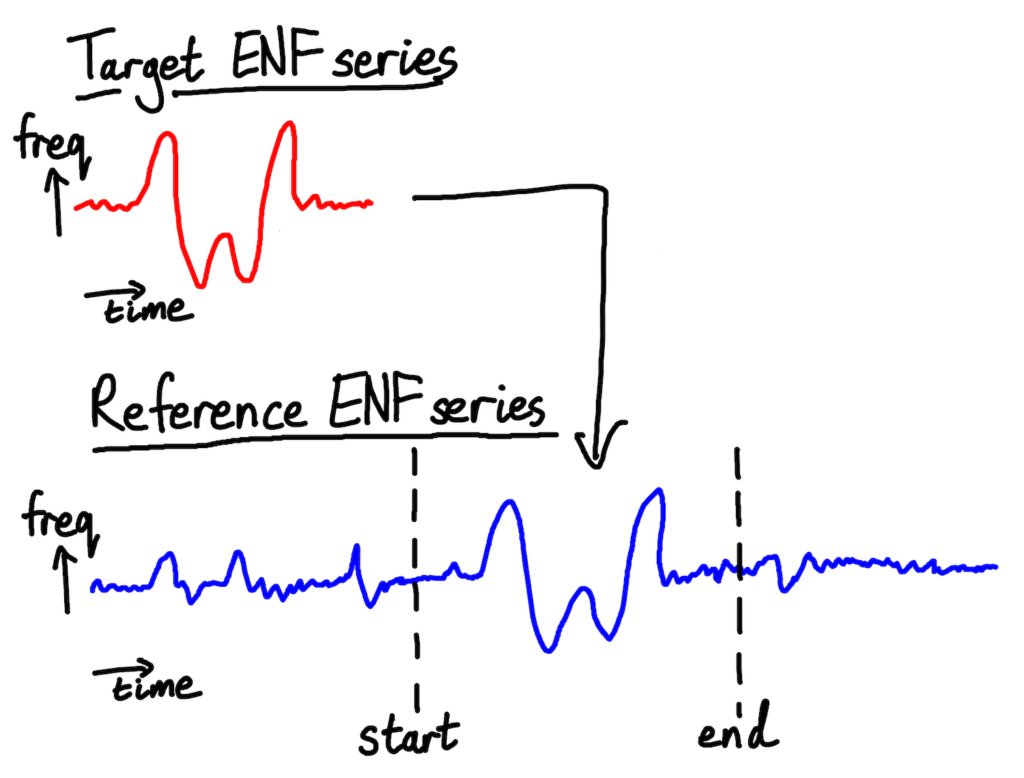We’re going to use ENF matching to answer the question “here’s a recording, when was it was (probably) taken?” I say “probably” because all that ENF matching can give us is a statistical best guess, not a guarantee. Mains hum isn’t always present on recordings, and even when it is, our target recording’s ENF can still match with the wrong section of the reference database by statistical misfortune.
Still, even though all ENF matching gives us is a guess, it’s usually a good one. The longer the recording, the more reliable the estimate; in the academic papers that I’ve read 10 minutes is typically given as a lower bound for getting a decent match.
To make our guess, we’ll need to:
- Extract the target recording’s ENF values over time
- Find a database of reference ENF values, taken directly from the electrical grid serving the area where the recording was made
- Find the section of the reference ENF series that best matches the target. This section is our best guess for when the target recording was taken
We’ll start at the top.
…
About a year after Tom Scott did a video summarising how deviation over time (and location!) of the background electrical “hum” produced by AC power can act as a forensic marker on audio recordings, Robert Heaton’s produced an excellent deep-dive into how you can play with it for yourself, including some pretty neat code.
I remember first learning about this technique a few years ago during my masters in digital forensics, and my first thought was about how it might be effectively faked. Faking the time of recording of some audio after the fact (as well as removing the markers) is challenging, mostly because you’ve got to ensure you pick up on the harmonics of the frequencies, but it seems to me that faking it at time-of-recording ought to be reasonably easy: at least, so long as you’re already equipped with a mechanism to protect against recording legitimate electrical hum (isolated quiet-room, etc.):
Taking a known historical hum-pattern, it ought to be reasonably easy to produce a DC-to-AC converter (obviously you want to be running off a DC circuit to begin with, e.g. from batteries, so you don’t pick up legitimate hum) that regulates the hum frequency in a way that matches the historical pattern. Sure, you could simply produce the correct “noise”, but doing it this way helps ensure that the noise behaves appropriately under the widest range of conditions. I almost want to build such a device, perhaps out of an existing portable transformer (they come in big battery packs nowadays, providing a two-for-one!) but of course: who has the time? Plus, if you’d ever seen my soldering skills you’d know why I shouldn’t be allowed to work on anything like this.

0 comments